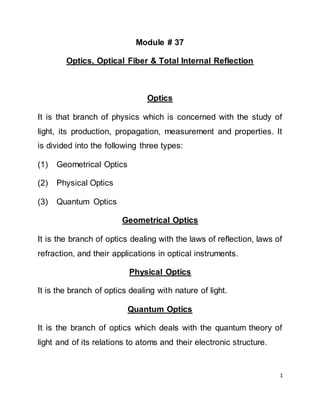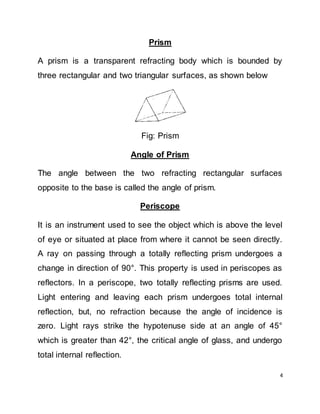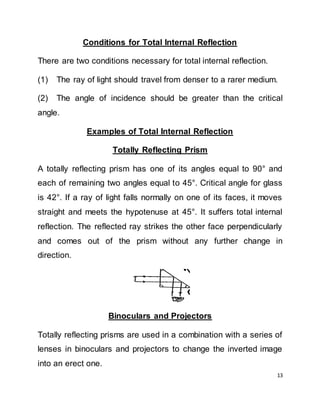Optics is the branch of physics that studies light, including its properties, production and propagation. There are three main branches: geometrical optics deals with laws of reflection and refraction, physical optics studies the nature of light, and quantum optics applies quantum theory to light. Optical instruments like microscopes use lenses, mirrors and prisms to observe objects. Optical fibers use total internal reflection to transmit light signals for communication. They have advantages over copper cables by being lighter, more flexible and having greater information carrying capacity.













